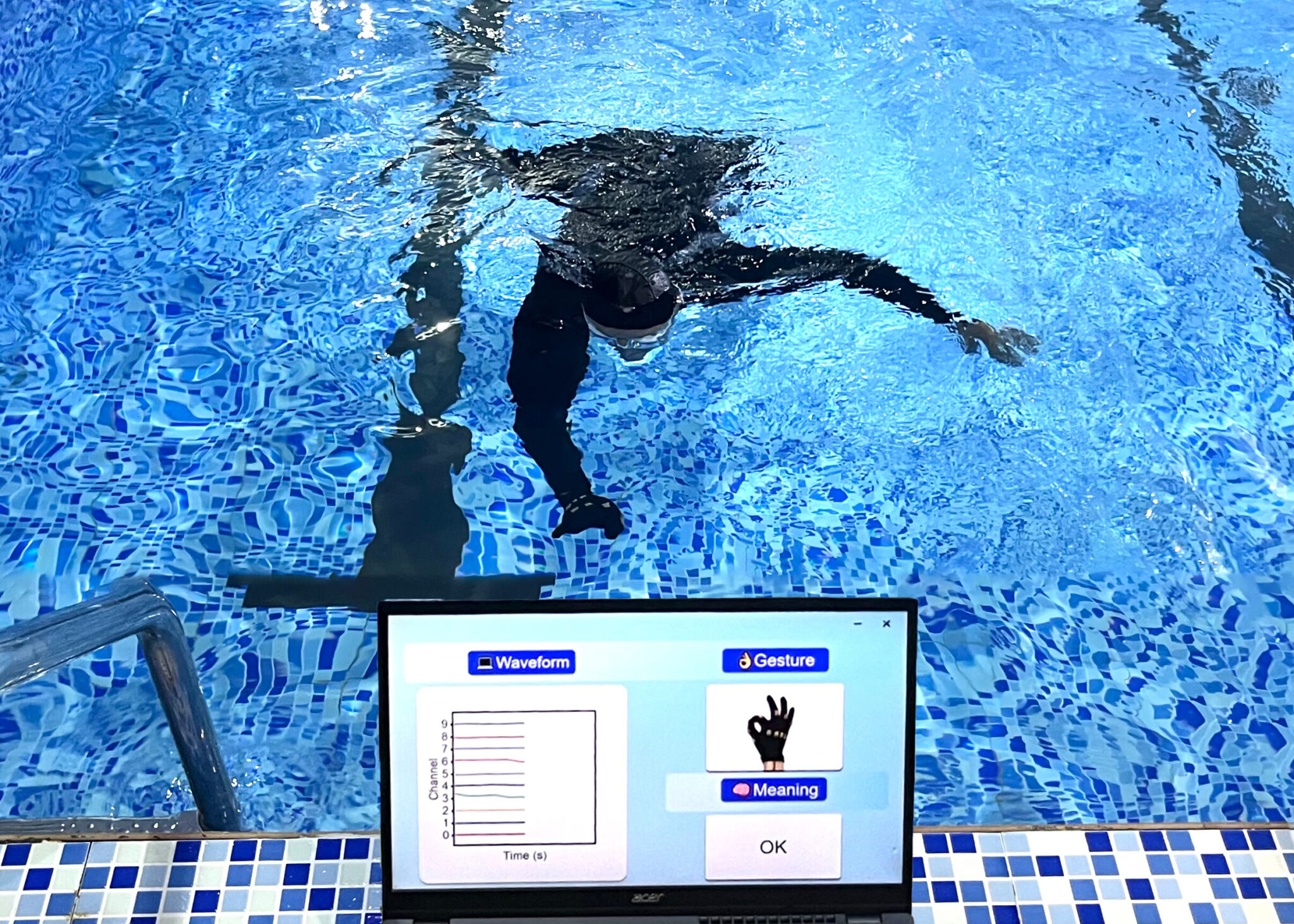Researchers have developed a waterproof e-glove capable of translating underwater hand gestures to improve scuba diving communication.
A groundbreaking development in scuba diving technology has been unveiled by researchers — a waterproof “e-glove” capable of translating underwater hand gestures into messages for fellow divers or surface support crews. Published in ACS Nano, this innovation promises to revolutionize communication among divers and holds the potential to enhance safety during underwater expeditions.
Traditionally, scuba divers rely on visual hand signals to communicate essential messages such as “I’m okay” or “shark” to their dive partners. However, these gestures can be challenging to see clearly, especially in murky waters or during low visibility conditions. The new e-glove solves this problem by wirelessly transmitting hand movements to a computer that interprets them into actionable messages.
The journey of creating this cutting-edge technology involved the team having to overcome several hurdles. E-gloves, equipped with electronic sensors that convert hand motions into data, are already in development for various applications, from virtual reality interactions to aiding stroke recovery. However, making these sensors waterproof without compromising flexibility and comfort posed a significant challenge.
Led by researchers Fuxing Chen, Lijun Qu, Mingwei Tian, and their team, the project began with the fabrication of waterproof sensors inspired by starfish’s tube-like feet. They utilized laser writing tools to create microscopic pillars on a waterproof plastic film, coated them with a conductive layer, and assembled them into a waterproof sensor roughly the size of a USB-C port. These sensors, embedded within self-adhesive bandages on the e-glove prototype, accurately detect hand gestures — even underwater — and can also respond to a range of pressures akin to light touch or water impact.

The e-glove’s functionality was tested with a hand-gesture vocabulary comprising 16 signals. These included common messages like “okay” and “exit.” By recording and analyzing the electronic signals produced by the sensors, the team developed a machine learning program that translates these gestures into messages with impressive accuracy (both on land and underwater), achieving a remarkable 99.8% success rate.
Looking ahead, this technology holds immense promise for enhancing scuba diving safety and communication. Future iterations of the e-glove could enable divers to convey visual signals effectively, even in challenging underwater environments where direct communication is hindered. This innovation marks a significant step forward in easier and safer underwater exploration for divers across the world.
While this technology is still future tech for most of us divers, we can continue learning and improving our own underwater communication. Take your next PADI course to level up your scuba skills.


